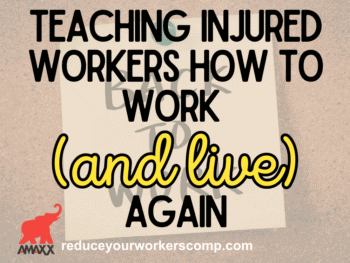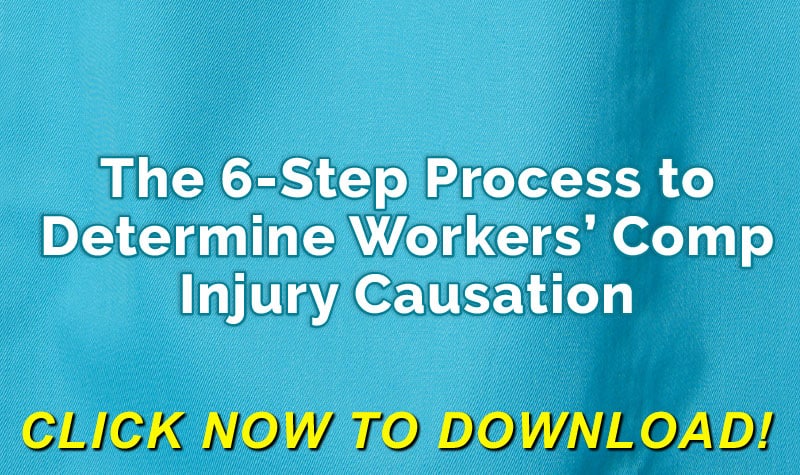
Case Study: Partial Rotator Cuff Tear – Employer/Adjuster Perspective
Claimant Information
- Employee Name: John Smith
- Job Description: Warehouse worker, loading & unloading boxes
- Injury: Partial Rotator Cuff Tear (ICD-10 M75.11)
As an employer, receiving a claim for a partial rotator cuff tear raises key questions:
- How long should John be expected to be out of work?
- Can John be placed in a temporary light-duty role during recovery?
EBM provides clear, data-backed injury duration guidelines to help answer these questions. By referencing authoritative sources like ODG (Official Disability Guidelines) and MDGuidelines, employers and adjusters can make informed decisions about recovery timelines.
Click Link to Access Free PDF Download
“The 6-Step Process To Determine Workers’ Comp Injury Causation”
Expected Recovery Time for a Partial Rotator Cuff Tear
According to MDGuidelines, the expected injury duration varies depending on the type of work required:
| Type of Work | Minimum (Days) | Optimum (Days) | Maximum (Days) |
|---|---|---|---|
| Sedentary | 0 | 3 | 4 |
| Light | 0 | 3 | 4 |
| Medium | 8 | 21 | 42 |
| Heavy | 21 | 42 | 85 |
| Very Heavy | 21 | 42 | 85 |
Interpreting the Data for Return to Work
John’s job as a warehouse worker involves lifting 50-pound boxes, classifying it under the heavy work category. His expected optimum recovery time is 42 days, but he could be back in as little as 21 days or as long as 85 days, depending on individual factors.
However, one of the most common misinterpretations is assuming that John must be completely off work for the full six weeks. This misconception increases claim costs and reduces return-to-work success rates.
Best Practice: Immediate Return to Light-Duty Work
According to EBM principles, 90%+ of injured employees should return to work in a modified-duty capacity within 0-4 days of injury. For John, this means:
- He should be placed in a light-duty role immediately after his injury.
- Tasks could include inventory management, quality checks, or administrative duties that do not require heavy lifting.
- By keeping him engaged at work, the employer reduces indemnity payments and increases the likelihood of a full return to normal duty.
Challenging Inappropriate Work Restrictions
Dr. Jacob Lazarovic, a recognized medical expert, emphasizes that EBM-based injury durations represent the expected physiological healing time. If a treating physician prolongs work restrictions beyond these guidelines, the employer and adjuster should challenge the medical rationale and request supporting clinical evidence.
Key Takeaways
- Use EBM guidelines to set appropriate expectations for injury recovery timelines.
- Avoid misinterpreting injury durations—most employees can return to modified duty immediately.
- Engage in early return-to-work planning to minimize lost time and claim costs.
- Challenge extended work restrictions if they deviate from evidence-based norms.
By integrating EBM into claims management, employers and adjusters enhance recovery outcomes, control costs, and ensure injured employees return to work efficiently.

Contact: mstack@reduceyourworkerscomp.com.
Workers’ Comp Roundup Blog: http://blog.reduceyourworkerscomp.com/
Injury Management Results (IMR) Software: https://imrsoftware.com/
©2025 Amaxx LLC. All rights reserved under International Copyright Law.
Do not use this information without independent verification. All state laws vary. You should consult with your insurance broker, attorney, or qualified professional.
















